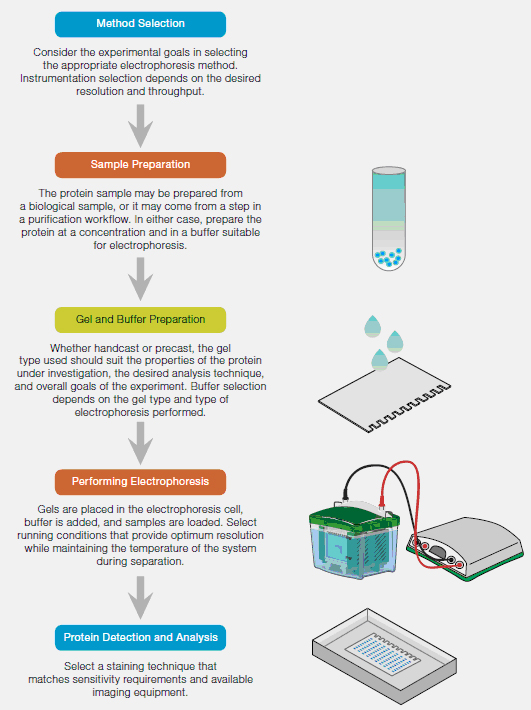Electrophoresis is a technique that is used to separate molecules based on their size and charge. It is a widely used technique in biochemistry and molecular biology, and it is used to purify and analyze proteins, DNA, and RNA. There are several different types of electrophoresis, and each one is suited to a specific application. Here, we will discuss the most common types of electrophoresis, including gel electrophoresis, capillary electrophoresis, and isoelectric focusing.
Gel electrophoresis is the most widely used form of electrophoresis. It involves the use of a gel matrix, such as agarose or polyacrylamide, to separate molecules based on their size and charge. The gel is placed in a glass or plastic container, and an electric current is applied to the system. The molecules are then drawn through the gel by the electric current, and they are separated based on their size and charge. Gel electrophoresis is used to purify and analyze proteins, DNA, and RNA.
Capillary electrophoresis is another common type of electrophoresis. It is similar to gel electrophoresis, but it uses a thin capillary tube instead of a gel matrix. The capillary tube is filled with a separation medium, such as a polymer or a buffer solution, and an electric current is applied to the system. The molecules are drawn through the capillary tube by the electric current and are separated based on their size and charge. Capillary electrophoresis is highly efficient and can be used to separate a wide range of molecules, including proteins, DNA, and RNA.
Isoelectric focusing is a type of electrophoresis that is used to separate molecules based on their isoelectric point (pI). The isoelectric point is the pH at which a molecule has no net charge, and it is unique to each molecule. Isoelectric focusing involves the use of a gel matrix that is pH gradient. An electric current is applied to the system, and the molecules are drawn through the gel by the electric current. As the molecules move through the gel, they are separated based on their isoelectric point. Isoelectric focusing is highly sensitive and can be used to separate and analyze a wide range of molecules.
In conclusion, electrophoresis is a technique that is used to separate and analyze molecules based on their size and charge. There are several different types of electrophoresis, including gel electrophoresis, capillary electrophoresis, and isoelectric focusing. Each of these techniques has specific applications, and they are all widely used in biochemistry and molecular biology.






